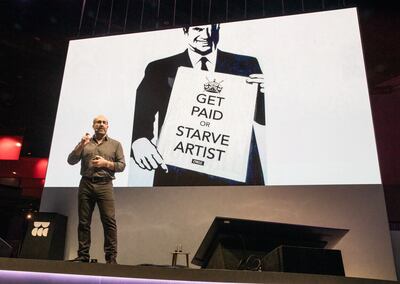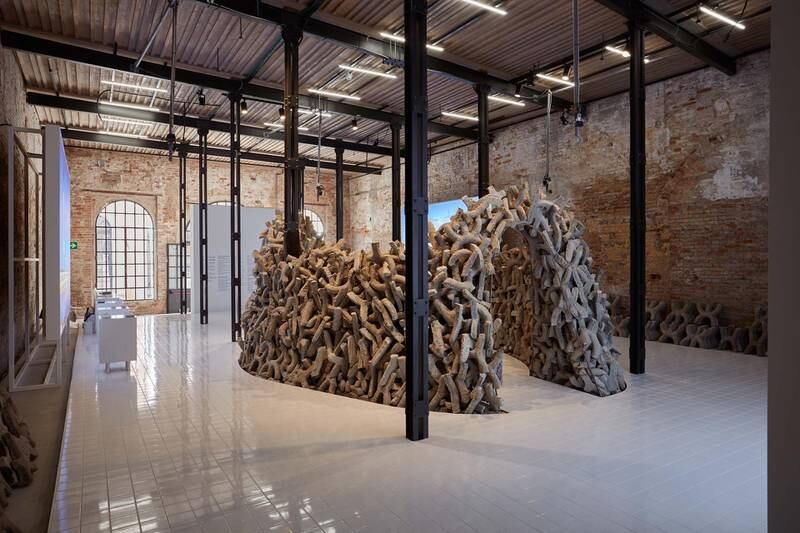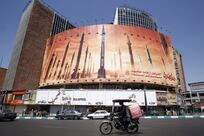Earlier this month, the UAE celebrated its 50th anniversary, a moment that marked decades of development that have ensured a culture of tolerance and diversity. With more than 195 nationalities living together in the UAE, the country has become home to creative professionals from across the world. This is a result of tremendous effort implemented over the past decades, by the government and the people, to develop a more inclusive arts and culture sector. The impact has been incredible. It is visible for all to see and now is the right time to consider how to set the scene for the next 50 years.
Since my arrival in 2006, the UAE’s cultural scene has shifted dramatically, marked by a development in art initiatives, fellowships, institutions, auction houses, galleries and creative hubs. There are numerous examples to substantiate this. From the launch of the Sharjah Biennale in 1993 and subsequent creation of the Sharjah Art Foundation, to community collaborations to build a variety of arts and culture centres. These along with the galleries, institutions and creative spaces – such as Dubai’s Alserkal Avenue – that have come up over the years and enabled dialogue and discovery. In many cases, these have been launch pads for budding cultural initiatives to grow and prosper.
We’ve also seen the country’s leadership support the cultural and creative community. Initiatives such as the UAE Cultural Development Fund aims to provide monetary aid to support cultural activities within the country. The UAE Architecture Index is a database and research reference to guide decision makers in the field of preservation, planning and development. This is in addition to the launch of iconic architectural projects such as Louvre Abu Dhabi, the Museum of the Future in Dubai, and the House of Wisdom in Sharjah. The UAE government has taken many steps that help the artistic community to thrive. The Golden Visa for the creative sector, for instance, gives creatives the freedom to live, flourish and build their practice within the UAE, independent of a sponsor.

All these developments in the UAE’s recent history have led to the growth of a diverse community of cultural professionals. Creatives from around the world are drawn to the country in no small part by the vibrancy and camaraderie of the creative communities and the opportunities the UAE provides. Like me, they have chosen to make the UAE home.
In the UAE, there is a strong belief that when nations and people meet in a spirit of collaboration and sharing, ideas can be created that can shape our collective progress. This is especially true when we convene in person at events such as the Venice Biennale – an international platform that continues to provide a platform for cross-cultural dialogue.
At the National Pavilion UAE, we have been lucky, over the years, to engage with an extensive pool of artists, curators, researchers, and partners from across different regions who have contributed to the UAE’s exhibitions, and have enabled us to tell the untold stories of this nation, at the Venice Biennale. Our 10th exhibition, Wetland, brought together the knowledge and perspectives of cross-cultural dialogues and collaborations to present distinctively local responses to significant global conversations – ultimately winning the Biennale’s biggest prize, the Golden Lion for Best National Participation. This collaborative spirit brings together bright minds who are capable of making available new research to future scholars. Such achievements prove that diversity of cultural creation, expression and sharing is also the strength of the UAE.
The UAE is at an inflection point. We must capitalise on creating further room for research and experimentation for present day artists as well as for emerging talent. We also have to encourage and facilitate means for archiving and preserving the research conducted. On both institutional and grassroots levels, we must continue to invest in creating opportunities for our diverse community of homegrown and multinational creatives to grow their careers and make the UAE home.
Already in 2021, we have seen promising developments accelerating this sector of our economy, such as long-term residential visas for creative and cultural professionals, and a special focus by the Guggenheim Abu Dhabi on the inclusion of works from underrepresented regions such as west Asia, north Africa, and south Asia. We can’t work in isolation, and it is through efforts like these that we’ll be able to find shared solutions to our mutual challenges.
Arts, culture, and architecture are, and will continue to be, vital elements of the UAE’s landscape. And a renewed focus on facilitating cross-cultural dialogue and inclusion will ensure that our creative ecosystem continues to strengthen, deepen and grow for the next 50 years.





